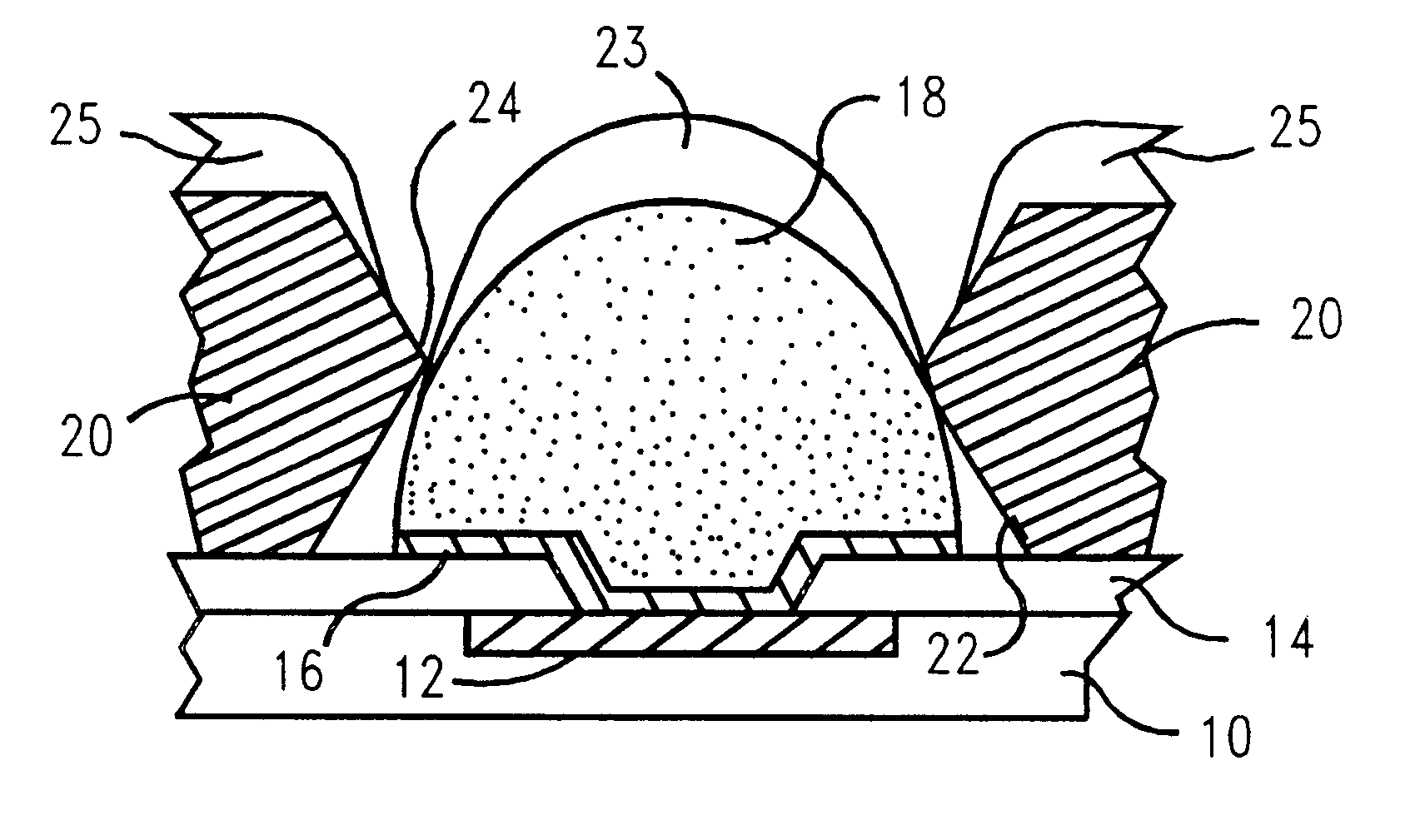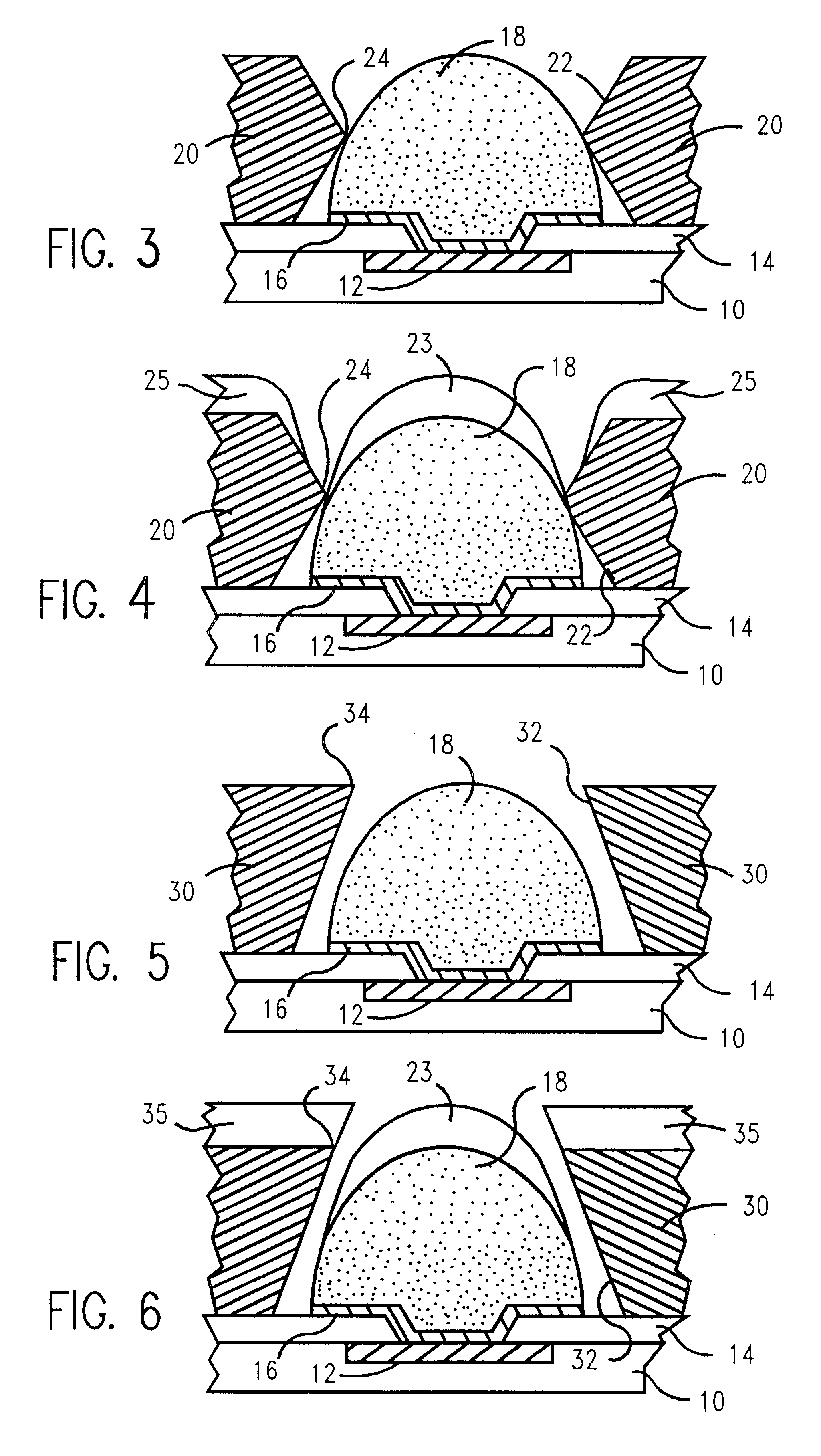Method for forming reflowed solder ball with low melting point metal cap
a technology of reflowed solder ball and metal cap, which is applied in the direction of resistive material coating, printed circuit assembling, final product manufacturing, etc., can solve the problems of limiting the yield of cards, insufficient process improvements alone, and high cost of products
- Summary
- Abstract
- Description
- Claims
- Application Information
AI Technical Summary
Benefits of technology
Problems solved by technology
Method used
Image
Examples
example 1
Semiconductor modules were made using the structure and process of this invention. On a convention solder ball 18, a capping layer of tin 23, was formed. The deposited capping layer of pure tin was between about 0.5 to about 2.0 mil thick, and it was deposited by evaporation. The amount of tin to be deposited on the solder ball 18, was determined by the volume of eutectic solder that is required to completely cover the exposed copper conductors 47, in card or substrate 45. The width and thickness of the copper conductor and the solder mask opening determines the surface area and hence the required eutectic volume. A 20 to 35 cubic mil of eutectic solder 43, volume is preferred for an original 40 to 100 cubic mil of high melt solder ball 18, volume.
PUM
| Property | Measurement | Unit |
|---|---|---|
| Fraction | aaaaa | aaaaa |
| Fraction | aaaaa | aaaaa |
| Fraction | aaaaa | aaaaa |
Abstract
Description
Claims
Application Information
 Login to View More
Login to View More - R&D
- Intellectual Property
- Life Sciences
- Materials
- Tech Scout
- Unparalleled Data Quality
- Higher Quality Content
- 60% Fewer Hallucinations
Browse by: Latest US Patents, China's latest patents, Technical Efficacy Thesaurus, Application Domain, Technology Topic, Popular Technical Reports.
© 2025 PatSnap. All rights reserved.Legal|Privacy policy|Modern Slavery Act Transparency Statement|Sitemap|About US| Contact US: help@patsnap.com



